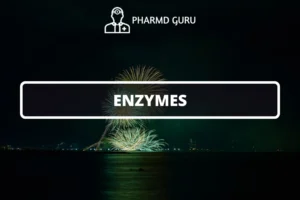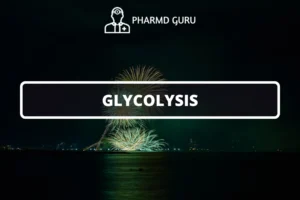Biochemistry is a branch of science that explores the chemical processes and substances that occur within living organisms. It delves into the structure, function, and interactions of biological macromolecules, such as proteins, nucleic acids, carbohydrates, and lipids, which are crucial for life. This article provides an introduction to biochemistry, focusing on the cell and its biochemical organization, the transport process across cell membranes, and the significance of energy-rich compounds like ATP and cyclic AMP.
SCROLL DOWN TO THE BOTTOM OF THE PAGE FOR ACTUAL NOTES
Table of Contents
- Introduction to Biochemistry
- The Cell: Basic Unit of Life
- Biochemical Organization of the Cell
- Transport Process across Cell Membranes
- Energy-Rich Compounds: ATP and Its Biological Significance
- Cyclic AMP: A Messenger Molecule in Cellular Signaling
1. Introduction to Biochemistry
Biochemistry explores the chemical reactions and pathways that occur within living organisms. It seeks to understand how biological molecules interact and function, providing a foundation for understanding life processes at the molecular level. Biochemists study the structure, function, and properties of biological macromolecules, as well as the chemical reactions that drive cellular processes.
2. The Cell: Basic Unit of Life
The cell is the fundamental unit of life. All living organisms are composed of one or more cells, which are highly organized and specialized. Cells come in various shapes and sizes and can be classified into two main types: prokaryotic and eukaryotic cells.
Prokaryotic cells, such as bacteria, lack a distinct nucleus and membrane-bound organelles. In contrast, eukaryotic cells, found in plants, animals, fungi, and protists, have a well-defined nucleus and various organelles that perform specific functions within the cell.
3. Biochemical Organization of the Cell
Within a cell, various structures and organelles work together to maintain the cell’s integrity and carry out essential processes. These include the nucleus, mitochondria, endoplasmic reticulum, Golgi apparatus, and lysosomes, among others.
The nucleus houses the cell’s genetic material, DNA, and controls cellular activities by regulating gene expression. Mitochondria are responsible for energy production through cellular respiration, generating ATP (adenosine triphosphate), the primary energy currency of the cell. The endoplasmic reticulum plays a crucial role in protein synthesis and lipid metabolism, while the Golgi apparatus modifies and packages proteins for transport to their final destinations. Lysosomes contain enzymes involved in intracellular digestion and waste disposal.
4. Transport Process across Cell Membranes
Cell membranes act as barriers that regulate the movement of substances into and out of cells. Different mechanisms facilitate the transport of molecules across cell membranes, including passive diffusion, facilitated diffusion, active transport, and endocytosis/exocytosis.
Passive diffusion occurs when molecules move from an area of higher concentration to an area of lower concentration, driven by the concentration gradient. Facilitated diffusion involves the use of membrane proteins to transport specific molecules across the membrane. Active transport requires the expenditure of energy to move molecules against their concentration gradient. Endocytosis and exocytosis involve the engulfing and release of substances by the cell membrane, respectively.
5. Energy-Rich Compounds: ATP and Its Biological Significance
ATP (adenosine triphosphate) is a nucleotide that serves as the primary energy carrier in cells. It is produced through cellular respiration and powers various cellular processes, including muscle contraction, nerve impulse transmission, and biosynthesis. ATP releases energy when its terminal phosphate group is hydrolyzed to ADP (adenosine diphosphate) and inorganic phosphate, providing the energy needed for cellular work.
6. Cyclic AMP: A Messenger Molecule in Cellular Signaling
Cyclic AMP (cAMP) is a small signaling molecule that plays a crucial role in cellular communication and signaling pathways. It is formed from ATP by the enzyme adenylyl cyclase and functions as a second messenger, relaying signals from cell surface receptors to intracellular targets. cAMP regulates various cellular processes, including metabolism, gene expression, and cell growth.
ACTUAL NOTES




